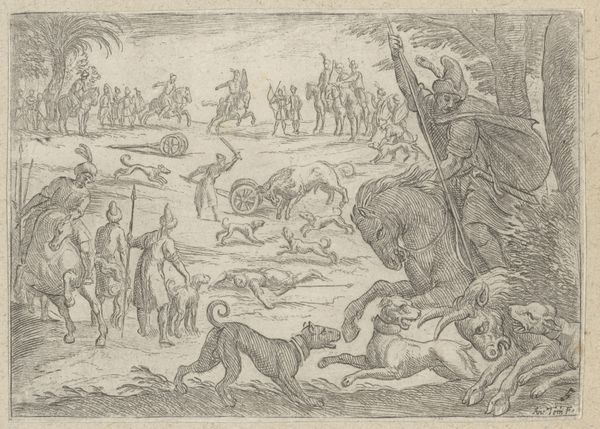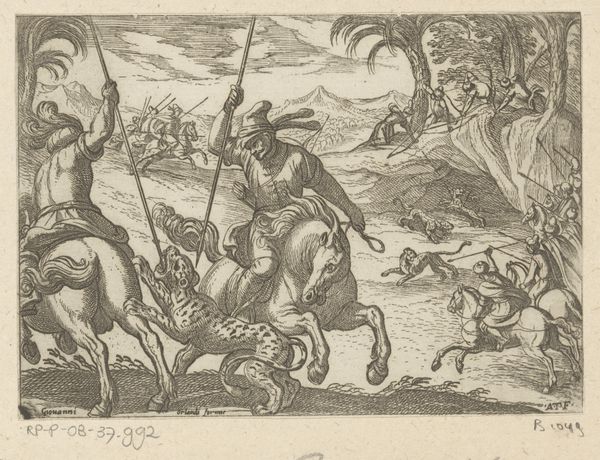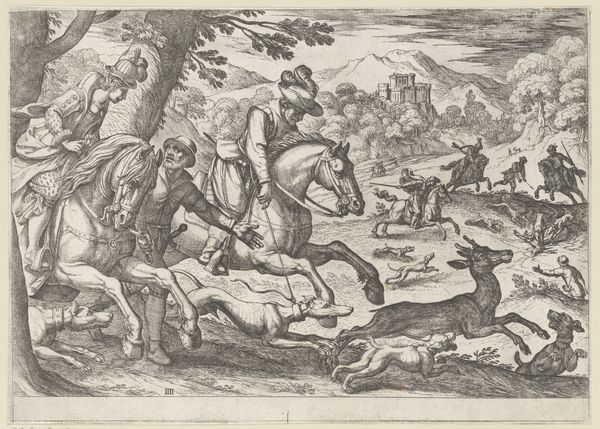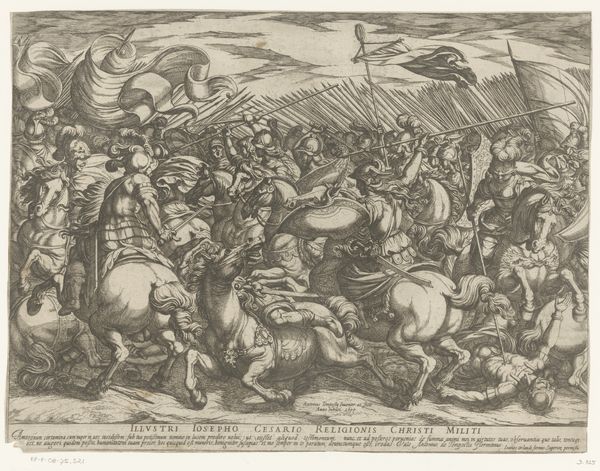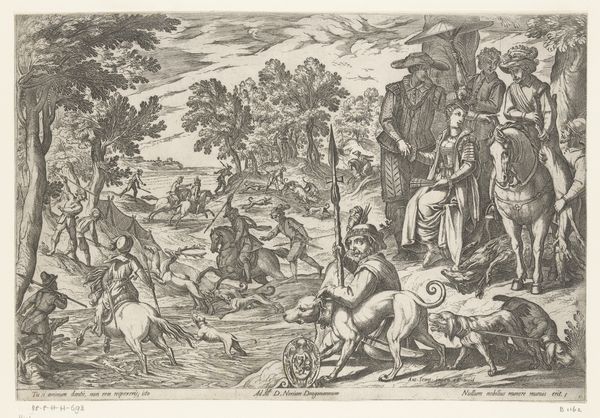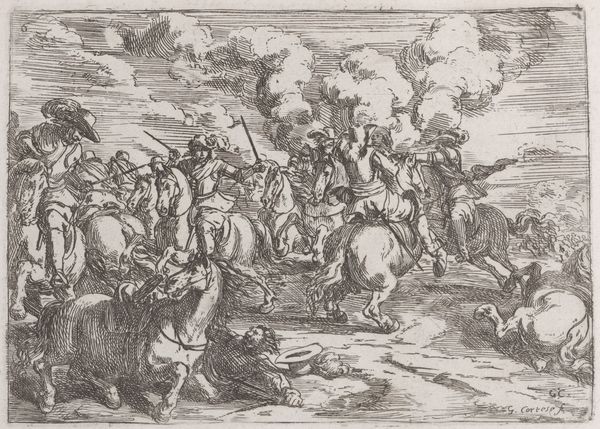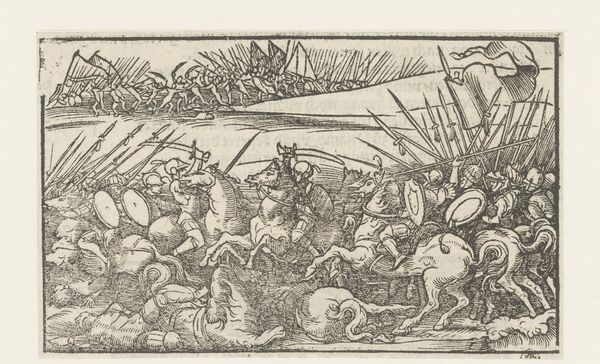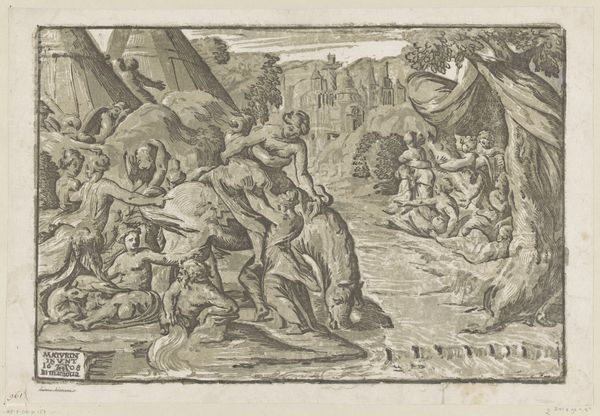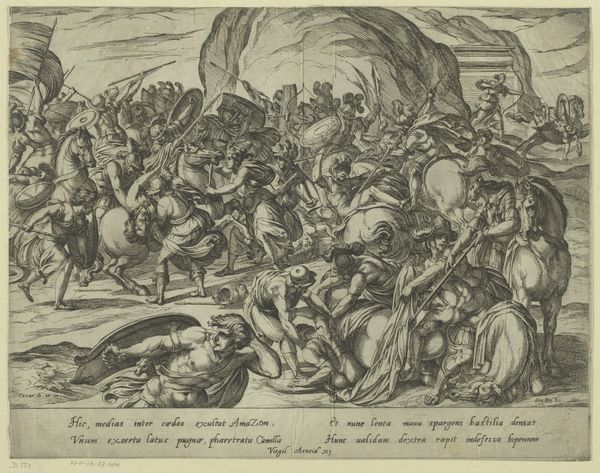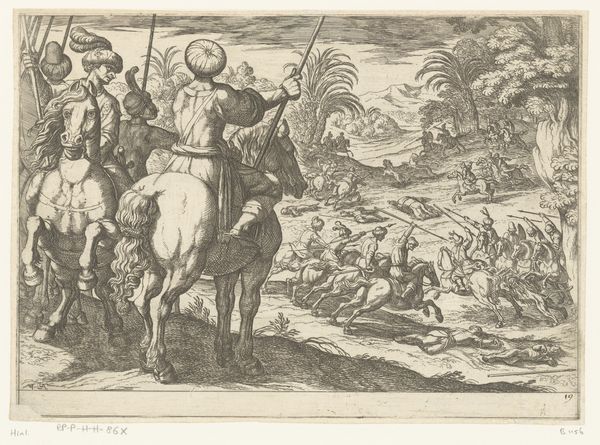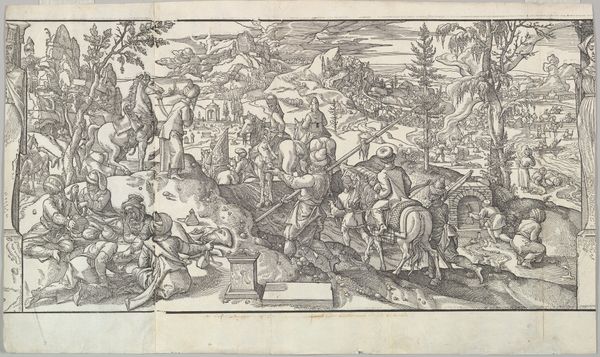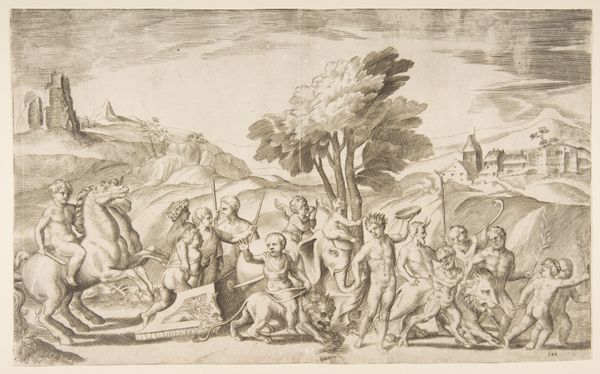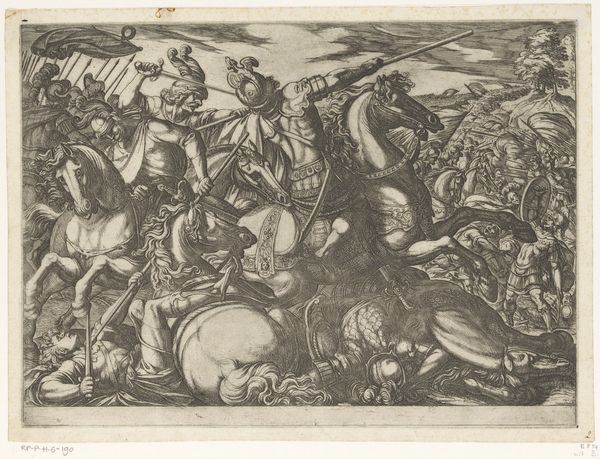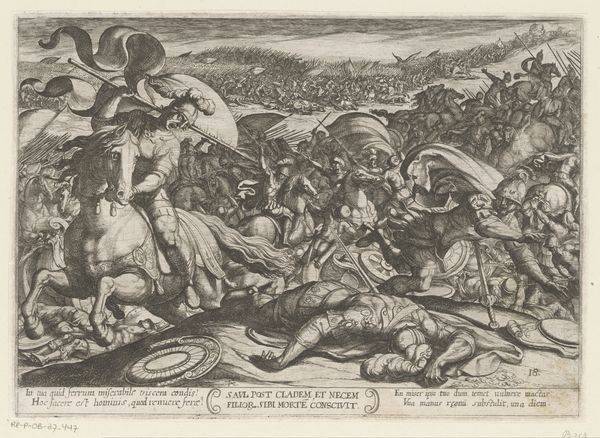
print, engraving
#
narrative-art
# print
#
landscape
#
figuration
#
history-painting
#
italian-renaissance
#
engraving
Dimensions: height 101 mm, width 140 mm
Copyright: Rijks Museum: Open Domain
Editor: We're looking at "Jacht op olifanten," or "Hunting Elephants," a 1598 engraving by Antonio Tempesta, currently housed in the Rijksmuseum. The chaotic composition makes me feel a bit overwhelmed – there's so much happening! What's your take on it? Curator: Immediately, one observes the dynamic interplay of lines and forms. The artist's mastery of the engraving technique is evident in the meticulous detailing, which contributes to a sense of depth despite the limited tonal range. Consider how Tempesta uses the receding plane to stage figures in varying scales, thereby constructing a visual hierarchy. Does this layering seem to effectively create depth, in your view? Editor: It does, though it feels somewhat stylized, less about naturalism and more about conveying information. Curator: Precisely. Note the deliberate distribution of light and shadow to articulate the muscularity of the animals and the drapery of the figures. The consistent hatching and cross-hatching not only define form but also create a textural surface across the entire composition. To what extent do you think the composition's balanced distribution of figures plays a role in directing the eye and creating visual harmony or disharmony? Editor: It’s busy, definitely disharmonious but captivating! It highlights action and violence through contrasting dark lines over pale forms, creating both visual and symbolic contrasts. Curator: I concur. The strength of this work resides in how it manages to harness an entire visual language from what some consider relatively rudimentary technology, yet is rich in visual data. Editor: I see what you mean about how Tempesta used technique and arrangement to convey drama. I definitely appreciate the composition more now!
Comments
No comments
Be the first to comment and join the conversation on the ultimate creative platform.
